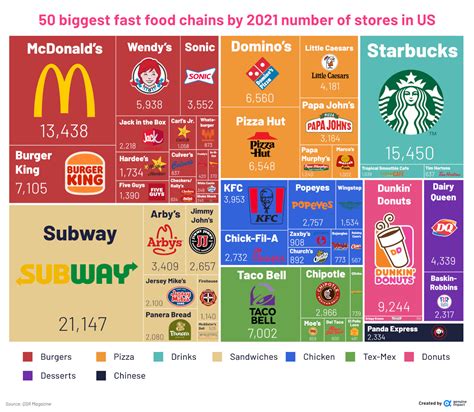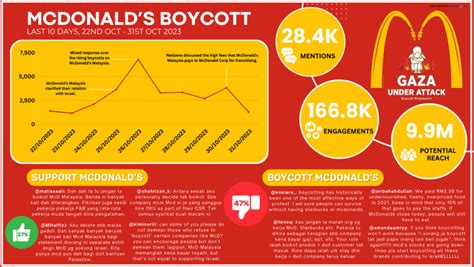
Prepare to pay more for customized Starbucks beverages: the coffee giant is increasing the price of add-ons like syrups and matcha powder, impacting customers nationwide. Starbucks confirmed the price adjustments for these popular customizations, a move that could further inflate the cost of already pricey specialty drinks.
Starbucks customers are bracing for higher bills as the company quietly rolls out price increases for customizations such as syrups and matcha. While the exact amount of the increase can vary by location, the adjustment is expected to impact millions of customers who frequently personalize their beverages with these popular add-ons. News of the price hikes began circulating online, prompting concerns among Starbucks enthusiasts who are already facing elevated prices across the board.
The confirmation from Starbucks followed reports and discussions across social media platforms, where customers shared their observations of increased charges for modifications to their drinks. A Starbucks spokesperson acknowledged the changes, stating, “We continuously evaluate our pricing to balance the need to meet the economic realities of our business while providing value to our customers.” The spokesperson emphasized that pricing decisions are made on a product-by-product and market-by-market basis, allowing for regional variations based on factors like local costs and consumer demand.
This move comes as Starbucks, like many other businesses in the food and beverage industry, grapples with rising operational costs, including increased expenses for ingredients, labor, and transportation. By adjusting the pricing of add-ons, Starbucks aims to offset some of these costs while continuing to offer a wide range of customizable beverage options. However, the price increases could potentially deter some customers from adding extras to their drinks, impacting both sales volumes and customer satisfaction.
The increase in the price of syrups and matcha powder is not the only change Starbucks customers have been noticing recently. The company has also been experimenting with different pricing strategies for other menu items, as well as adjusting its rewards program to better align with its business objectives. These changes reflect the ongoing efforts by Starbucks to adapt to evolving market conditions and customer preferences while maintaining its position as a leading global coffee retailer. The company’s financial reports have shown a consistent growth pattern, but also highlight the increasing pressures from inflation and supply chain disruptions.
Industry analysts suggest that Starbucks’ decision to raise prices on add-ons is a strategic move to maximize revenue from its most loyal customers. By focusing on customizations, which are often perceived as discretionary purchases, Starbucks can increase its profit margins without significantly impacting the demand for its core coffee offerings. However, the analysts also caution that the company must carefully monitor customer response to these price increases to avoid alienating its base and driving customers to competitors.
The impact of the price increases on Starbucks’ overall sales and customer loyalty remains to be seen. While some customers may be willing to absorb the additional costs for their favorite customized drinks, others may opt for simpler, less expensive options, or even switch to alternative coffee shops. The effectiveness of Starbucks’ pricing strategy will ultimately depend on its ability to balance profitability with customer satisfaction and maintain its competitive edge in the increasingly crowded coffee market.
Detailed Analysis of Starbucks’ Pricing Strategy
Starbucks’ decision to increase the prices of syrups and matcha powder is part of a broader strategy to optimize revenue and profitability in a challenging economic environment. The company faces numerous pressures, including rising costs for coffee beans, dairy products, and other essential ingredients, as well as increased labor expenses due to minimum wage laws and competitive hiring practices. In addition, Starbucks is investing heavily in technology and infrastructure to enhance the customer experience and streamline its operations.
To offset these costs, Starbucks has been exploring various pricing strategies, including raising prices on select menu items, adjusting the structure of its rewards program, and increasing the cost of customizations. The focus on add-ons like syrups and matcha is particularly significant because these items are often perceived as non-essential, allowing Starbucks to increase prices without significantly impacting the demand for its core coffee offerings.
The pricing strategy is also influenced by Starbucks’ understanding of its customer base. The company’s research has shown that a significant portion of its revenue comes from a relatively small group of loyal customers who visit frequently and are willing to pay a premium for customized beverages. By targeting these customers with price increases on add-ons, Starbucks can potentially generate substantial additional revenue without alienating the majority of its customer base.
However, Starbucks must also be careful not to overprice its customizations, as this could lead to a backlash from customers and drive them to competitors. The company’s pricing decisions are therefore based on a careful analysis of market conditions, customer behavior, and competitive pricing. Starbucks also monitors customer feedback closely to gauge the impact of its pricing changes and make adjustments as needed.
Impact on Customer Behavior and Loyalty
The price increases on syrups and matcha powder are likely to have a mixed impact on customer behavior and loyalty. Some customers may be willing to absorb the additional costs for their favorite customized drinks, particularly if they perceive the price increases as relatively small. These customers may continue to visit Starbucks regularly and order their usual beverages, even if they cost slightly more.
However, other customers may be more sensitive to price changes and may opt for simpler, less expensive options. These customers may choose to order plain coffee or tea instead of customized beverages, or they may reduce the frequency of their visits to Starbucks. Some customers may even switch to alternative coffee shops that offer lower prices or more attractive loyalty programs.
The impact of the price increases on customer loyalty will depend on a variety of factors, including the magnitude of the price changes, the availability of alternative options, and the overall quality of the Starbucks experience. If customers feel that the price increases are excessive or that the quality of the Starbucks experience has declined, they may be more likely to switch to a competitor.
To mitigate the risk of losing customers, Starbucks may need to offer incentives to encourage continued loyalty. This could include offering discounts on customized beverages, providing bonus rewards points for frequent purchases, or introducing new menu items that are priced competitively. Starbucks may also need to improve the overall customer experience to justify the higher prices, such as by offering faster service, more comfortable seating, or more personalized interactions.
Competitive Landscape and Market Trends
The coffee market is highly competitive, with numerous players vying for market share. In addition to Starbucks, major competitors include Dunkin’, McDonald’s, and a growing number of independent coffee shops and specialty retailers. These competitors offer a wide range of coffee beverages and food items, often at lower prices than Starbucks.
The competitive landscape is also being shaped by evolving consumer preferences. Customers are increasingly demanding higher-quality coffee, more sustainable and ethically sourced ingredients, and more convenient ordering and payment options. They are also looking for more personalized and customizable experiences, which is driving the demand for add-ons like syrups and matcha powder.
To remain competitive, Starbucks must adapt to these evolving trends and offer a compelling value proposition to its customers. This includes investing in high-quality ingredients, improving its sustainability practices, enhancing its technology infrastructure, and providing a personalized and customizable experience. Starbucks must also carefully monitor its pricing to ensure that it remains competitive without sacrificing profitability.
The price increases on syrups and matcha powder could potentially give competitors an advantage, particularly if they are able to offer similar customizations at lower prices. However, Starbucks has a strong brand reputation and a loyal customer base, which could help it to weather the price increases and maintain its market share.
Financial Implications for Starbucks
The price increases on syrups and matcha powder are expected to have a positive impact on Starbucks’ financial performance, although the magnitude of the impact will depend on several factors. The most direct impact will be an increase in revenue from the sale of customized beverages. If customers continue to order their usual beverages despite the price increases, Starbucks will generate more revenue from each transaction.
The price increases could also lead to an improvement in Starbucks’ profit margins. By increasing the price of add-ons, Starbucks can increase its gross profit per beverage, which could lead to higher overall profitability. However, the impact on profit margins will depend on the extent to which customers reduce their consumption of customized beverages in response to the price increases.
The price increases could also have indirect financial implications for Starbucks. For example, if the price increases lead to a decline in customer loyalty, this could result in lower overall sales and revenue. Conversely, if the price increases are well-received by customers and do not significantly impact loyalty, this could strengthen Starbucks’ brand reputation and attract new customers.
Starbucks’ financial performance will also be influenced by broader economic conditions, such as inflation, interest rates, and consumer spending. If the economy weakens, customers may become more price-sensitive and less willing to pay for customized beverages. Conversely, if the economy strengthens, customers may be more willing to absorb the price increases.
Starbucks will need to carefully monitor its financial performance and make adjustments to its pricing strategy as needed to ensure that it remains profitable and competitive.
Long-Term Outlook for Starbucks
The long-term outlook for Starbucks remains positive, despite the challenges it faces. The company has a strong brand reputation, a loyal customer base, and a proven track record of innovation and growth. Starbucks is also well-positioned to benefit from the growing demand for coffee and other specialty beverages.
However, Starbucks must continue to adapt to evolving market conditions and consumer preferences to maintain its competitive edge. This includes investing in high-quality ingredients, improving its sustainability practices, enhancing its technology infrastructure, and providing a personalized and customizable experience. Starbucks must also carefully manage its costs and pricing to ensure that it remains profitable and competitive.
The price increases on syrups and matcha powder are a reflection of the challenges and opportunities that Starbucks faces in the current economic environment. While the price increases may be unpopular with some customers, they are necessary to offset rising costs and maintain profitability. If Starbucks can successfully navigate these challenges, it is well-positioned to continue growing and thriving in the years ahead. The global coffee market is expected to expand, and Starbucks is working on expanding its global presence with new stores.
Frequently Asked Questions (FAQ)
Q1: Why is Starbucks increasing the price of syrups and matcha?
A: Starbucks is increasing the price of add-ons like syrups and matcha powder to “balance the need to meet the economic realities of our business while providing value to our customers.” This is primarily driven by rising operational costs, including ingredients, labor, and transportation.
Q2: How much are the prices of syrups and matcha increasing?
A: The exact amount of the price increase can vary by location. Starbucks states that pricing decisions are made on a product-by-product and market-by-market basis, so the increase may differ depending on where you are.
Q3: Will this price increase affect all Starbucks locations?
A: It is expected that the price adjustments will impact Starbucks locations nationwide, but the specific increase may vary regionally due to local costs and consumer demand.
Q4: What can I do to avoid paying more for my Starbucks drink?
A: You can avoid paying extra by ordering drinks without added syrups or matcha, exploring Starbucks’ standard menu offerings, utilizing available rewards programs, or comparing prices at different coffee shops to find more affordable options.
Q5: How will these price increases affect Starbucks’ overall business strategy?
A: The price increases are part of a broader strategy to optimize revenue and profitability. Starbucks aims to offset rising costs and maintain its position in the competitive coffee market by strategically adjusting pricing on customizations while monitoring customer response to balance profitability with customer satisfaction.



![[Restaurant Name] Returns! Iconic Chain Revives After 30-Year Absence](https://generasitekno.com/wp-content/uploads/2025/06/unnamed-file-924-150x150.jpg)





